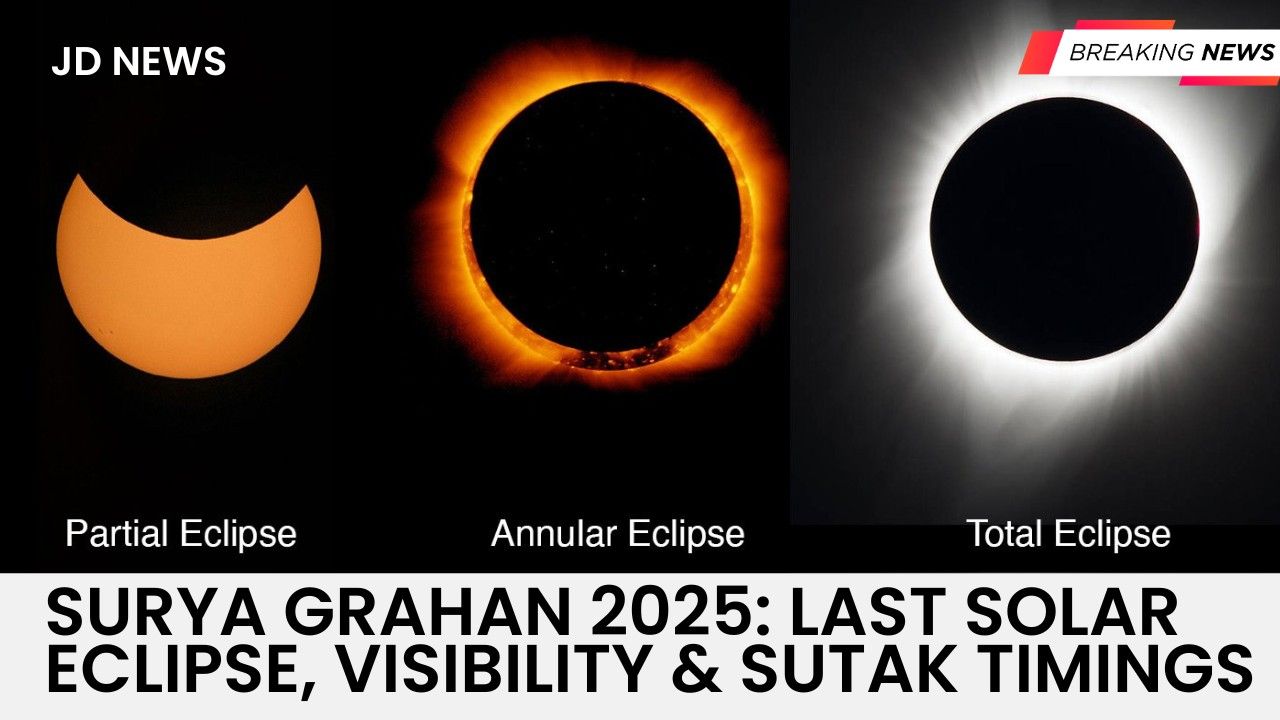Surya Grahan 2025: Will the Last Solar Eclipse of the Year Be Visible in India? Check Sutak Timings

The final solar eclipse of 2025 will occur on September 21, which coincides with Sarvapitra Amavasya. According to the Vedic Panchang, this eclipse is of extraordinary religious significance, although unlike prior celestial spectacles, it will not be visible in India. As a result, the traditional Sutak time, which is generally associated with rigorous religious constraints, will not apply here. However, for those who monitor planetary movements and spiritual practices, the solar eclipse remains a significant occurrence with both astronomical and cultural implications.
Surya Grahan 2025 Date and Time
According to official reports from the Indian Meteorological Department and global astronomical data, the solar eclipse will begin at 10:59 PM on September 21 and terminate at 3:23 AM on September 22 (IST). The eclipse is classified as a partial solar eclipse. While the event may be seen in numerous parts of the world, including North America, Europe, and Africa, India will not be able to witness it. This lack of visibility explains why no Sutak was seen in the country during this eclipse.
Why Sutak Does Not Apply in India
In Hindu tradition, Sutak begins approximately 12 hours before a solar eclipse and is considered unlucky for fresh beginnings, puja rituals, and food preparation. However, Sutak can only be seen when the eclipse is visible in a specific area. Because the eclipse will not create a shadow over India, temples will not close, and religious restrictions will not be imposed. This distinction is critical for believers who frequently prepare for such astronomical phenomena.
Surya Grahan and Sarvapitra Amavasya
The eclipse is particularly stunning since it occurs on Sarvapitra Amavasya, the last day of Pitru Paksha. This day is dedicated to honouring ancestors with ceremonies such as Tarpan and Shraddha. Many Hindu families regard it as a spiritually auspicious time to seek blessings and ensure tranquilly for departed spirits. While the eclipse will not be visible, spiritual practices linked with Amavasya will continue as usual. Scholars and priests advise focussing on prayers, offerings, and benevolent activities after performing morning rites, as these are considered especially meritorious.
Broader Significance of the Eclipse
Beyond religious activities, the September 2025 solar eclipse highlights India's greater discourse about science and spirituality. Astronomically, eclipses are natural celestial events caused by the alignment of the sun, moon, and earth. Spiritually, these are times of serious thought, frequently accompanied by meditation and mantra recitation. Even if the event is not visible locally, experts advocate singing sun mantras like "Om Hram Hreem Hroum Sah Suryaya Namah" during the period to promote mental serenity and energy alignment.
Final Word
As the last solar eclipse of 2025, this event is significant both cosmically and culturally. While India will not be physically shadowed, its connection with Sarvapitra Amavasya ensures a day of reflection, reverence, and tradition. Devotees are encouraged to continue ancestral offerings, pray, and consider the balance of science and spirituality that such cosmic happenings emphasise.
📌Disclaimer: The information provided in this blog is for general guidance only and is not intended to serve as religious, astrological, or scientific advice. Solar eclipses are natural phenomena with cultural and spiritual interpretations that vary across communities. Readers are encouraged to consult authoritative astronomical data, religious texts, or experts for specific guidance.